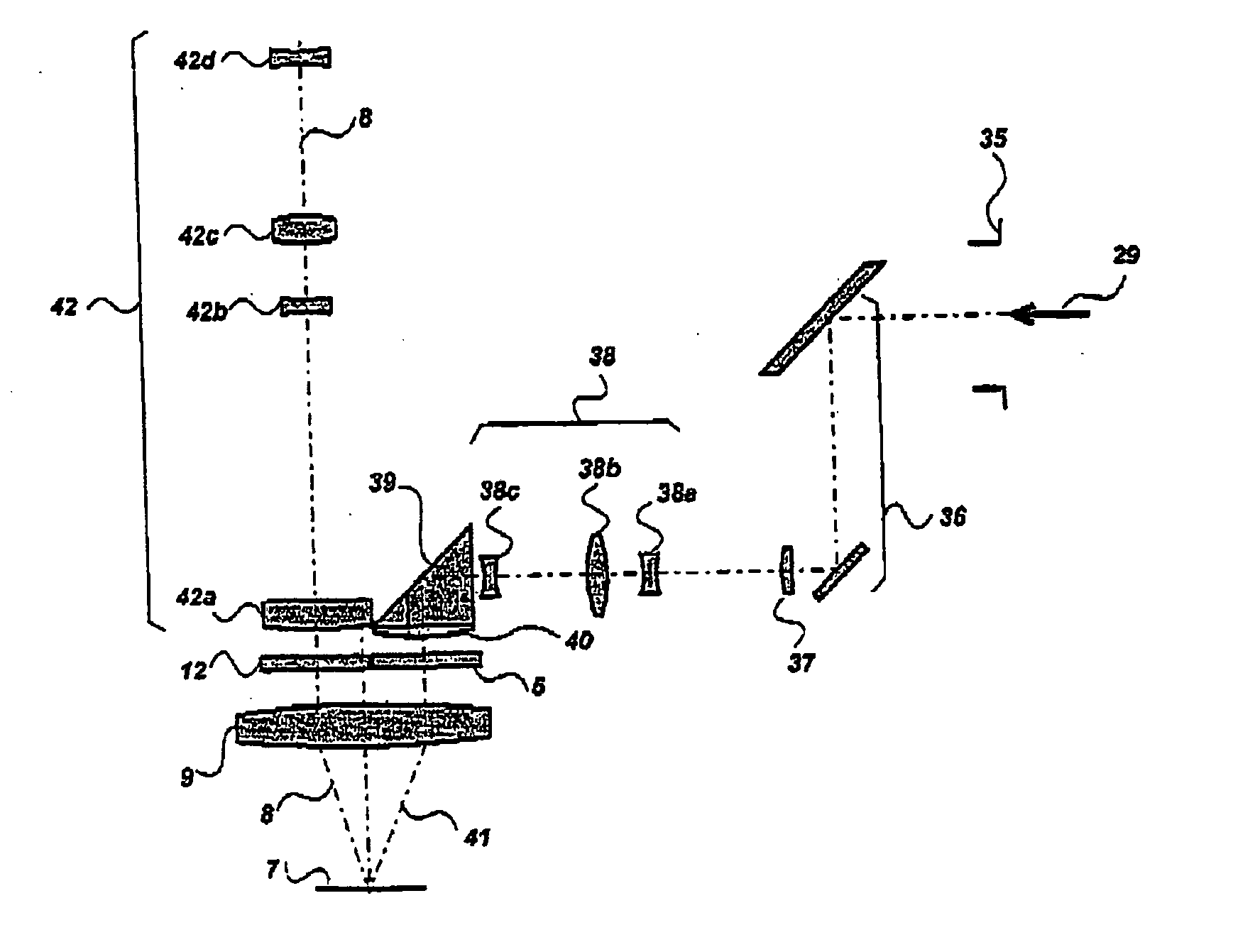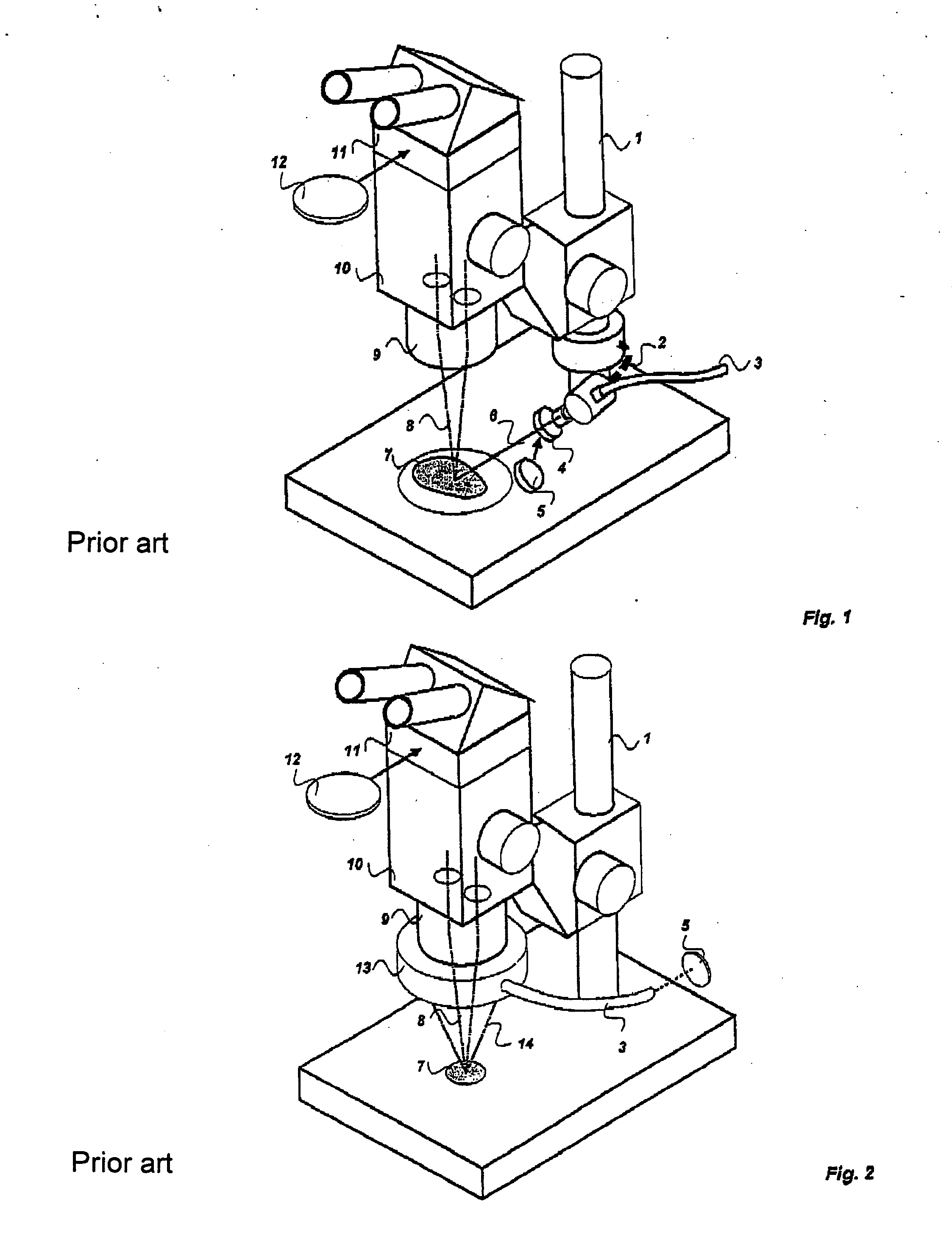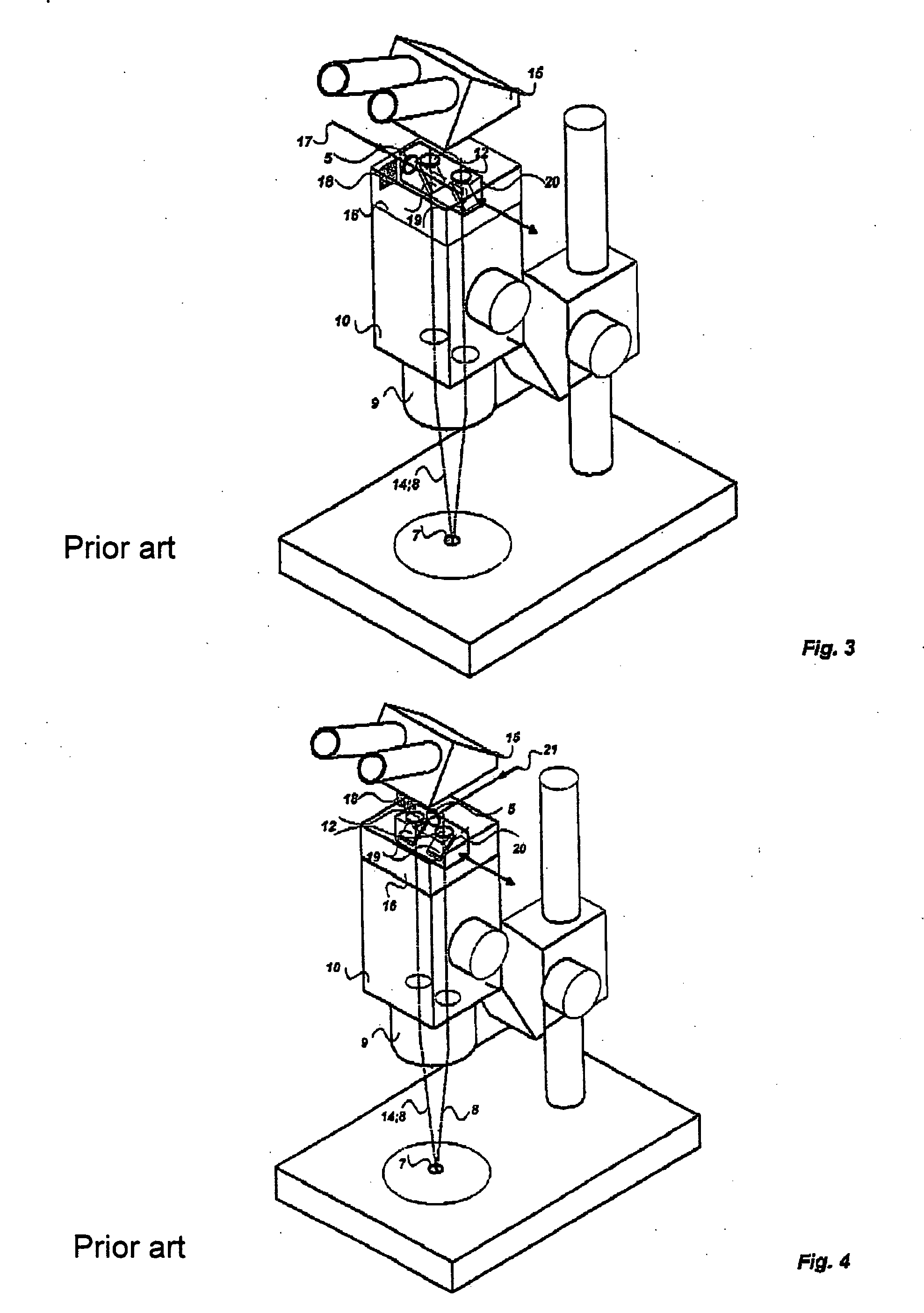Incident light fluorescence stereo microscope
- Summary
- Abstract
- Description
- Claims
- Application Information
AI Technical Summary
Benefits of technology
Problems solved by technology
Method used
Image
Examples
Embodiment Construction
[0052] According to FIG. 7 and FIG. 8, the illumination light 29 entering from the light attachment 35 of the incident light fluorescence stereo microscope body 43 is deflected through the excitation filter 5 via a light staircase 36, an illumination lens 37, a light zoom 38, and a stationary deflecting element 39 with a convex lens 40 fitted to it and is then guided as excitation beam path 41 through the objective 9 at an inclination approaching the stereo angle from the back toward the circular light spot 7 in the object plane. The stereoscopic observation beam path 8 proceeding from the fluorescing object travels back via the objective 9 through two blocking filters 12 into the observation zoom 42 of the incident light fluorescence stereo microscope body 43 and continues to the observing tube 15. The light zoom 38 is connected to the observation zoom 42 by a suitable coupling element 44 in such a way that the illumination ratios in the excitation beam path 41 are correspondingly ...
PUM
 Login to View More
Login to View More Abstract
Description
Claims
Application Information
 Login to View More
Login to View More - R&D
- Intellectual Property
- Life Sciences
- Materials
- Tech Scout
- Unparalleled Data Quality
- Higher Quality Content
- 60% Fewer Hallucinations
Browse by: Latest US Patents, China's latest patents, Technical Efficacy Thesaurus, Application Domain, Technology Topic, Popular Technical Reports.
© 2025 PatSnap. All rights reserved.Legal|Privacy policy|Modern Slavery Act Transparency Statement|Sitemap|About US| Contact US: help@patsnap.com



